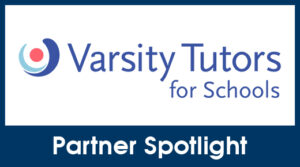 In a recent webinar moderated by Liz Cohen, Policy Director at FutureEd, a panel of educators, researchers, and industry experts gathered to discuss building, implementing, and maintaining a high-dosage tutoring program in a post-ESSER world. The session provided valuable insights into the benefits, challenges, and future of tutoring programs in schools.
In a recent webinar moderated by Liz Cohen, Policy Director at FutureEd, a panel of educators, researchers, and industry experts gathered to discuss building, implementing, and maintaining a high-dosage tutoring program in a post-ESSER world. The session provided valuable insights into the benefits, challenges, and future of tutoring programs in schools.
The Importance of High-Impact Tutoring
Liz Cohen, Policy Director at FutureEd, set the stage by defining high-impact tutoring and its significance. High-impact tutoring involves at least three sessions per week, each lasting at least 30 minutes, with a consistent tutor working individually or in small groups. This approach has proven effective, with a review of 89 studies showing that elementary students gain an average of four months of additional learning through typical high-dosage tutoring programs. “Tutoring has a tremendous evidence base,” Liz emphasized. “It’s exceedingly rare in my experience of 20 years working in education policy to have an effective solution that is so popular.”
District Success Stories
Polk County Public Schools
Joe McNaughton, Chief Academic Officer, shared the journey of Polk County Public Schools. The district started its high-dosage tutoring program post-COVID in the 2022-23 school year, initially with 43 schools. Phase One included five schools, followed by 15 additional schools in Phase Two, and the remaining 23 schools in Phase Three. The program officially started on January 6th, after meticulous planning and collaboration with Varsity Tutors for Schools, the technology department, and the teaching and learning division.
Principal training was a key component of their success, ensuring school leaders were fully on board. Comprehensive courses were built for each school, including recorded training sessions for ongoing support. Teachers received extensive support as well, with Varsity Tutors for Schools representatives providing hands-on assistance during planning periods.
Throughout the three phases, Polk County Public Schools continually refined its processes, learning from early mistakes and improving support structures. By March, just before spring break, all participating schools were integrated into the program, supported by both district personnel and Varsity Tutors for Schools. This collaborative effort successfully established a robust tutoring program tailored to the district’s needs.
Through collaboration with Varsity Tutors for Schools and strategic planning, the district achieved a 44% improvement in English Language Arts and a 27% improvement in Mathematics in the state FAST exams. “This year I’ve had so many parent calls just thanking the district for doing it [high-dosage tutoring] because they see changes in their child,” Joe reported.
Ferguson-Florissant School District
Brent Mitchell, Chief of Staff at Ferguson-Florissant School District, discussed how his district implemented a high-dosage tutoring program. The tutoring program in Ferguson-Florissant began with a pilot at the end of the 2022-2023 school year. This pilot phase allowed the district to evaluate the program and align it with their strategic plan, which emphasizes equity and access for all students from pre-K through 12th grade.
Since its launch, the program has focused on three schools identified as needing targeted or comprehensive support. From September to October, these schools conducted over a thousand teacher-assigned sessions, indicating notable progress in providing high-quality education to all students. They saw positive feedback from the community and educators. “The feedback I get from parents in the community, from educators alike, has been successful,” Brent shared. “Our goal here is always to have equity and access for all.” The panelists emphasized that tutoring is not just for struggling students but can benefit all learners. “Tutoring encompasses every single kid in every single classroom, whether they be high performers or kids who we have to add extra resources to get them what they need,” Brent Mitchell stated.
Funding and Sustainability
David DeSchryver, Senior Vice President at Whiteboard Advisors, explained the complexities and flexibilities of funding tutoring programs. David stated, “identifying the funds is more of an art than a science.” Federal funds such as Title I, Title IV, and sometimes Title III for English learners are commonly utilized. Programs like the 21st Century Community Learning Centers help integrate community activities with schools. States have their own funding formulas and grants, such as Title I enrichment grants and systems of support grants. About 17 states now provide categorical funds specifically for enrichment programs, including tutoring.
The Future of Tutoring
Anthony Salcito, Chief Institution Officer at Varsity Tutors for Schools, highlighted the inevitability of personalized learning and the crucial role of tutoring. “Tutoring is frankly the first mover here – the systems of tutoring have been robust enough and mature enough to scale individualized instruction,” Anthony said. He also stressed the importance of leveraging technology and mixed-modality learning to enhance educational outcomes.
In Conclusion
The conversation wrapped up with a call to action for educators and leaders to embrace high-dosage tutoring as a vital component of their educational strategies. The panelists shared a sense of optimism and commitment to continuing this important work to support student learning and well-being. As Liz Cohen aptly put it, “Tutoring is never done.” The conversation about how to sustain and evolve tutoring programs will undoubtedly continue, reflecting the ongoing commitment to enhancing educational outcomes for all students.
Lear more here.
